Watch Your Steps
Explore kinetic energy during a movement at constant speed.
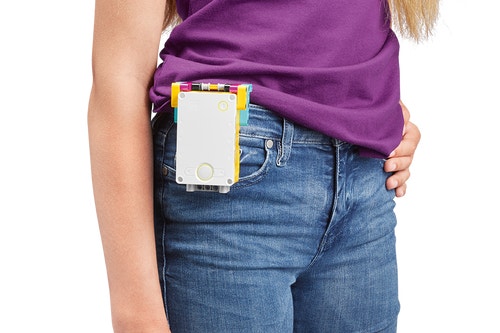
Engage
(Before Class, 20 Min)
This lesson explores the kinetic energy of a person walking at a constant speed. Your students will start by measuring the number of steps they've taken. They'll use that value to calculate the distance traveled, average walking speed, and average kinetic energy value for that motion. The Hub has an internal accelerometer that can detect movement on the 3 axes (i.e., up-down, left-right, front-back). When the Hub is clipped to someone's hip, it moves as they walk and records acceleration values. The resulting graph shows the minimum and maximum values of the recorded acceleration values. The precision of these minimum and maximum values will depend on the vertical position of the Hub while the student is walking. The "step count" precision will depend on the quality of these minimum and maximum values, and the calibrating values used in the program.
Use various materials to engage your students on the topic of kinetic energy.
Ignite a Discussion
Start a discussion by asking questions related to the lesson. Here are a few suggestions:
- How can you measure how fast you're walking?
- How can you measure or calculate the energy of an object in motion?
- Which type of energy is that?
Have your students write down their thoughts as a hypothesis.
Explore
(In Class, 30 Min)
- Have your students build a pedometer that can count the number of steps taken. They can create their own models, or follow the building instructions in the app to build the Pedometer model.
- Ask your students to try out their models using the suggested program.
- Tell them to look at the graph of acceleration over time, and describe what a "step" is.
Explain
(In Class, 15 Min.)
- Allow your students some time to adjust their programs to improve performance.
- Encourage them to record as much data as possible during their experiments.
- Have them export their data as a CSV file, so they can manipulate it in other software if they wish.
Elaborate
(After Class, 25 Min.)
- If your students still have access to their SPIKE Prime Sets, have them complete the tasks from the SPIKE App, to elaborate with hands-on learning, for example:
- Ask them to illustrate their kinetic energy as they walk or as part of their program. They can use the docking station as one device to program to accomplish this task.
- If your students don't have access to their sets, have them complete their Student Inventor Notebook, or assign one of the extension activities suggested below. Most of the extension activities can be done using the data collected during the hands-on session
- Facilitate a sharing session in which your students exchange information. This can be done using whichever method/tool is most efficient (i.e., in-person or online).
Evaluate
- Give feedback on each student's performance.
- You can use the assessment rubrics provided to simplify the process.
Assessment Opportunities
Teacher Observation Checklist
Establish a scale that meets your needs, for example:
- Partially accomplished
- Fully accomplished
- Overachieved
Use the following success criteria to evaluate your students' progress:
- The students can program a device to log data on a line graph.
- The students can interpret the values coming from the line graph.
- The students can explain kinetic energy in relation to speed.
Self-Assessment
Have each student choose the brick that they feel best represents their performance.
- Blue: I can graph data using the program provided in the app.
- Yellow: I can create my own line graph and explain my results.
- Violet: I've created new experiments on my own.
Peer-Assessment
Encourage your students to provide feedback to others by:
- Having one student score the performance of another using the colored brick scale above.
- Asking them to present constructive feedback to each other so that they can improve their performance during the next lesson. This is a great opportunity to use videoconferencing tools or blog posting tools in a blended learning scenario.

Differentiation
Simplify this lesson by:
- Asking your students to recreate the experiment using only the Hub. The data should be relevant for counting steps as long as the Hub is held perpendicular to the ground.
Take this lesson to the next level by:
- Asking your students to build their own pedometers
- Having your students repeat the experiment using a phone or a tablet as a pedometer, comparing the results of both experiments
- This will require an app that can visualize the device's sensor values
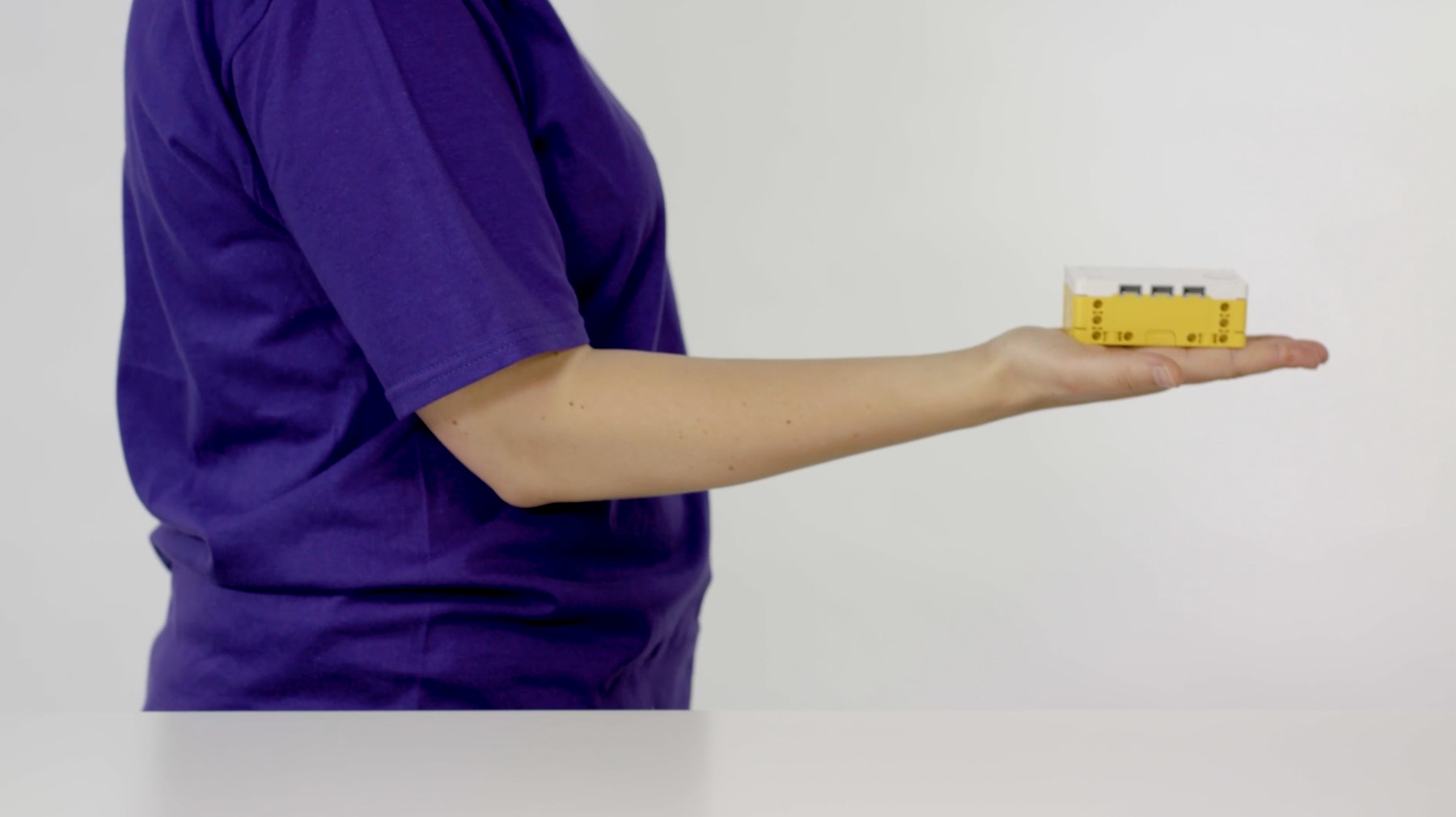
Tips
Building Tips

Coding Tips
This lesson is designed to be played while the hub is connected through USB or Bluetooth. While connected, the data collected by the Hub is streamed directly to your device, and traced in real-time on the Line Graph.
Main Program

Solution Program

Science Data Tips
Here is an example of the data students can expect from this experiment.
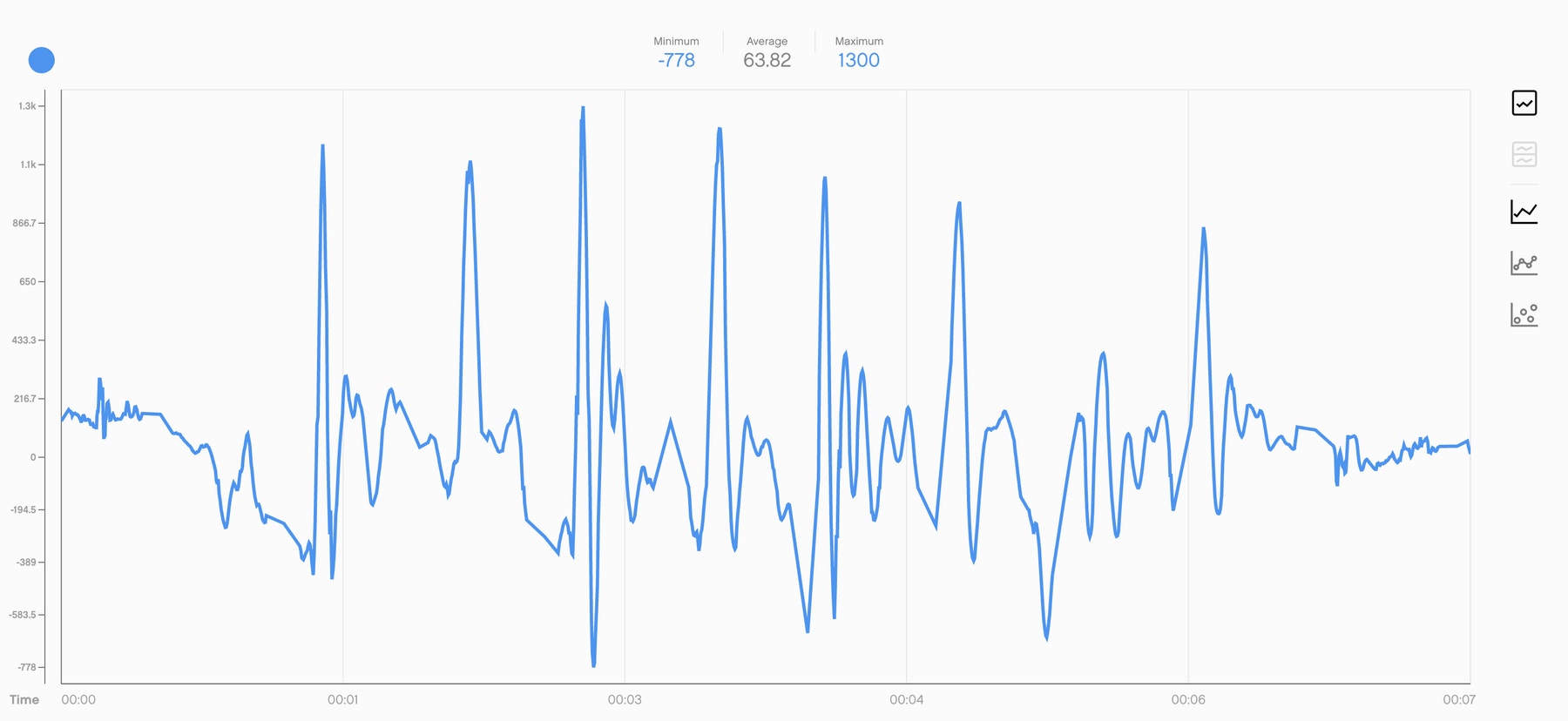
Extensions
Math Extension
To incorporate the development of math skills:
- Ask your students the identify the elements of their experiments that required approximation. Tell them to keep in mind that step lengths aren't always consistent and that pedometers have a limited rate of success (i.e., they're precise within a margin of error).
- Have your students develop theoretical versions of their experiments by describing what an ideal curve would describe a step.
Note: This will require additional time.
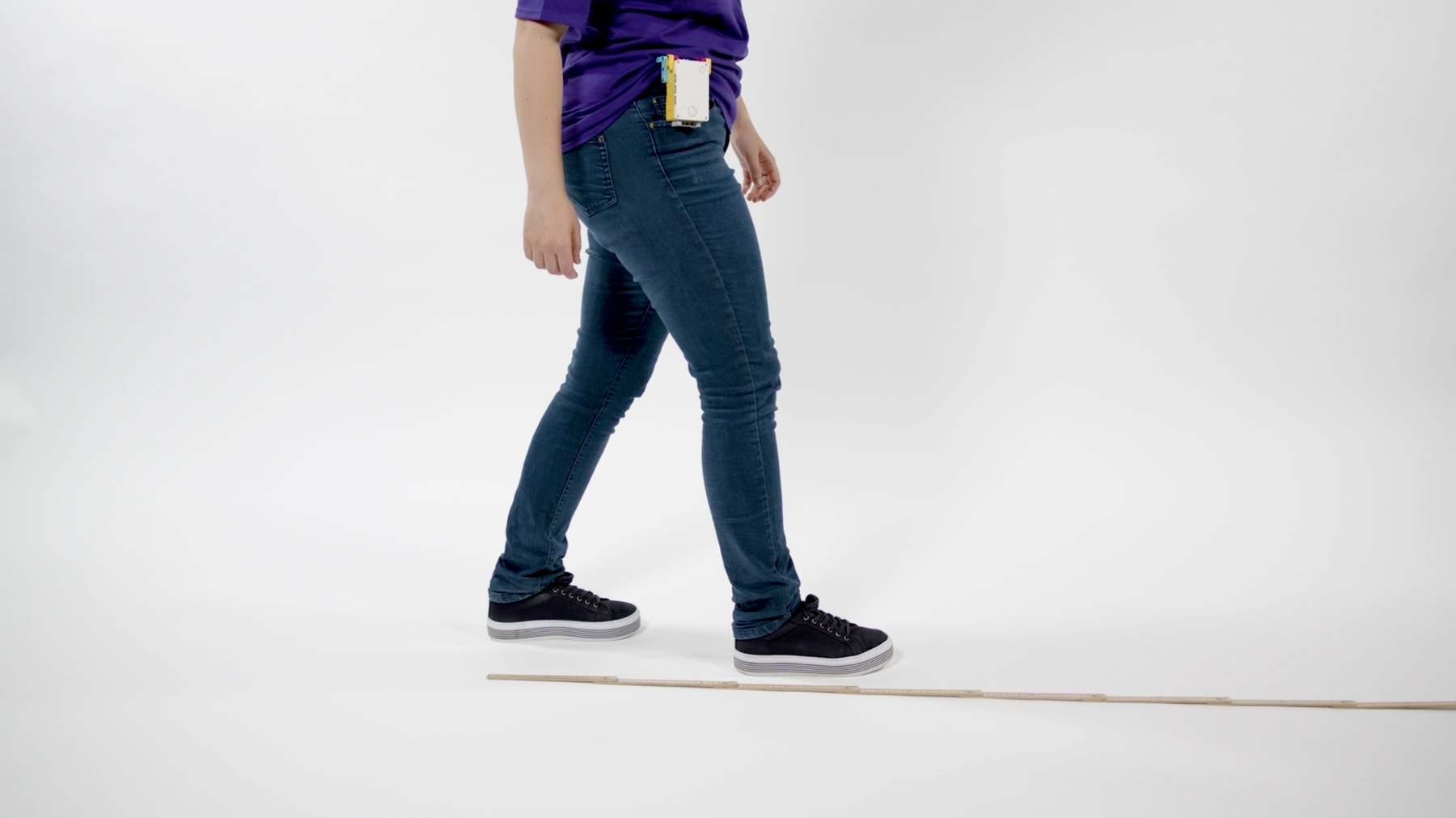
Language Arts Extension
To incorporate the development of language arts skills:
- Ask your students to research how smart watches or phones record step counts. Have them write a short explanation of how the technology works, including the percentage of error.
- Have your students explore how pattern recognition, from an AI point of view, helps these smart devices to detect steps.
Note: This will require additional time.
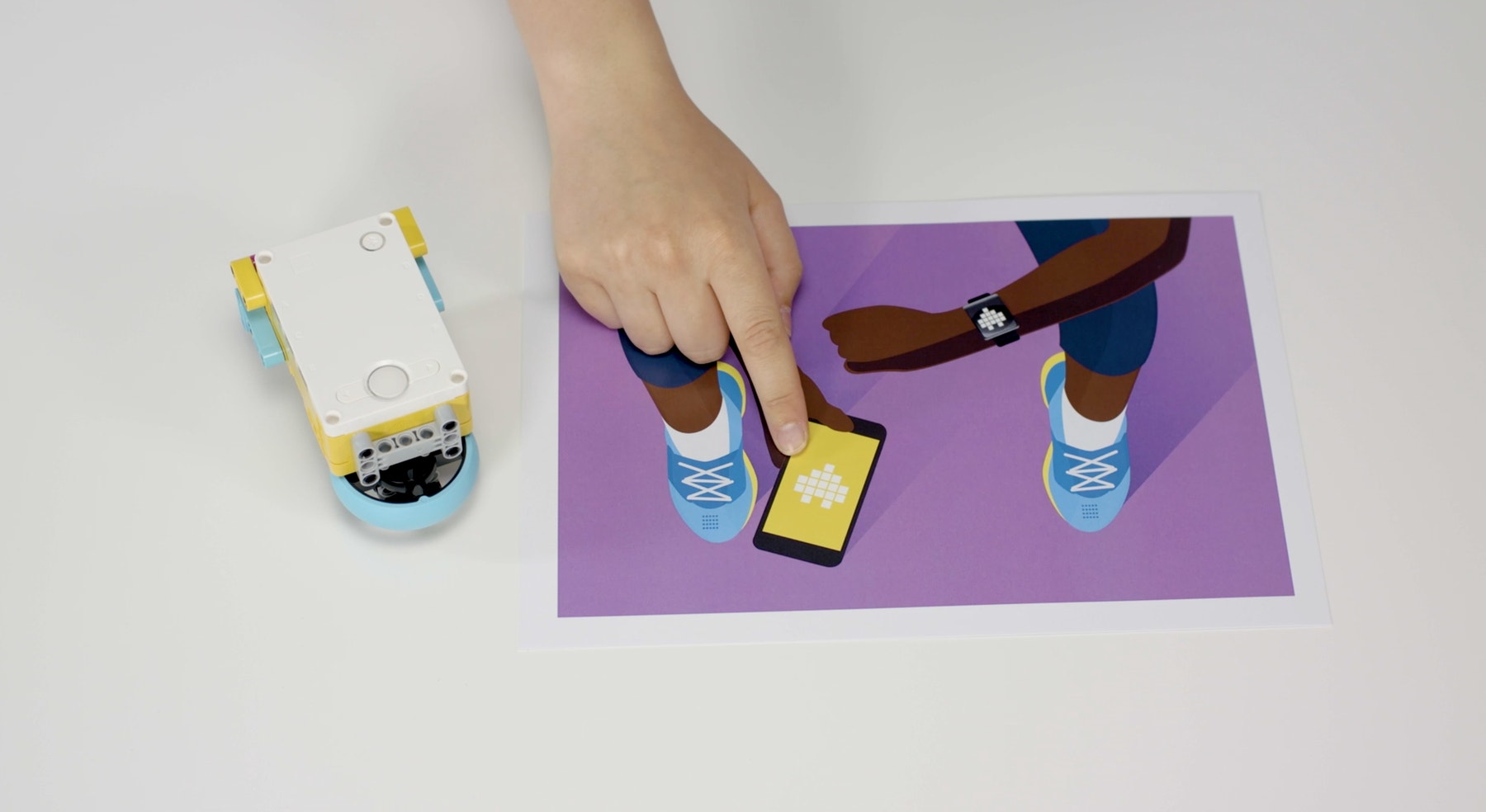
Career Links
Students who've enjoyed this lesson might be interested in exploring these career pathways:
- Therapeutic Services
- Engineering & Technology
Teacher Support
Students will:
• Learn to recognize the number of steps taken, as shown in an acceleration graph over time
• Convert step count into average speed and into average kinetic energy when walking
LEGO® Education SPIKE™ Prime Set
Device with the LEGO Education SPIKE App installed
NGSS
MS-PS3-4
Plan an investigation to determine the relationships among the energy transferred, the type of matter, the mass, and the change in the average kinetic energy of the particles as measured by the temperature of the sample.
Common Core
CCSS.MATH.CONTENT.7.RP.A.2
Recognize and represent proportional relationships between quantities.
CCSS.MATH.CONTENT.7.RP.A.2.A
Decide whether two quantities are in a proportional relationship, e.g., by testing for equivalent ratios in a table or graphing on a coordinate plane and observing whether the graph is a straight line through the origin.
CCSS.MATH.CONTENT.7.RP.A.2.B
Identify the constant of proportionality (unit rate) in tables, graphs, equations, diagrams, and verbal descriptions of proportional relationships.
CCSS.MATH.CONTENT.7.RP.A.2.C
Represent proportional relationships by equations. For example, if total cost t is proportional to the number n of items purchased at a constant price p, the relationship between the total cost and the number of items can be expressed as t = pn.
CCSS.MATH.CONTENT.7.RP.A.2.D
Explain what a point (x, y) on the graph of a proportional relationship means in terms of the situation, with special attention to the points (0, 0) and (1, r) where r is the unit rate.
CCSS.ELA-LITERACY.W.7.2
Write informative/explanatory texts to examine a topic and convey ideas, concepts, and information through the selection, organization, and analysis of relevant content.
CCSS.ELA-LITERACY.W.7.2.A
Introduce a topic clearly, previewing what is to follow; organize ideas, concepts, and information, using strategies such as definition, classification, comparison/contrast, and cause/effect; include formatting (e.g., headings), graphics (e.g., charts, tables), and multimedia when useful to aiding comprehension.
CSTA
2-CS-01
Recommend improvements to the design of computing devices, based on an analysis of how users interact with the devices.
2-CS-02
Design projects that combine hardware and software components to collect and exchange data.
2-DA-08
Collect data using computational tools and transform the data to make it more useful and reliable.
ISTE
4a
Students know and use a deliberate design process for generating ideas, testing theories, creating innovative artifacts or solving authentic problems.
4b
Students select and use digital tools to plan and manage a design process that considers design constraints and calculated risks.
4c
Students develop, test and refine prototypes as part of a cyclical design process.
5b
Students collect data or identify relevant data sets, use digital tools to analyze them, and represent data in various ways to facilitate problem-solving and decision-making.
5d
Students understand how automation works and use algorithmic thinking to develop a sequence of steps to create and test automated solutions.




